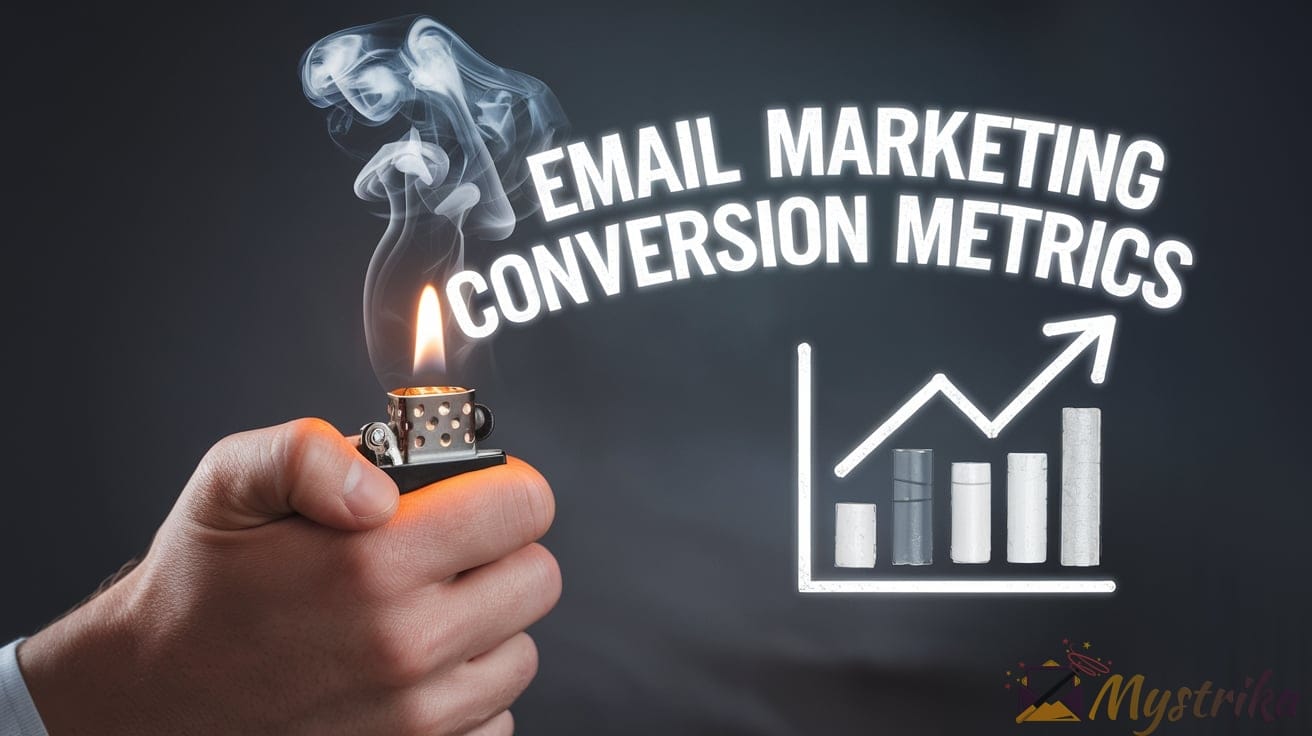Want to boost your email open rates, click-through rates, and engagement? Uncover the formulas, tools, benchmarks, and tips for unlocking the full potential of your email campaigns.
Defining Key Email Marketing Metrics
Email marketing campaigns depend on tracking key metrics to understand the effectiveness of outreach efforts. By analyzing performance data, marketers can refine messaging, segmentation, design, and overall strategy. This section will define essential email metrics that all marketers should understand.
Open Rate
The open rate shows the percentage of total recipients who opened an email campaign. It’s calculated by dividing the number of unique opens by the number of emails sent.
For example, if a campaign was sent to 1,000 subscribers and 600 people opened the email, the open rate would be:
Open Rate = (Unique Opens / Total Emails Sent) x 100
Open Rate = (600 / 1000) x 100 = 60%
This metric indicates how compelling your subject line and preview text are. Higher open rates mean more people are interested enough to view your full message.
Industry benchmarks show an average open rate of 20-25% across all sectors. Finance and real estate emails see higher rates around 30%, while non-profits and education lag under 20%.
Click-through Rate (CTR)
Click-through rate measures how many recipients clicked on links within an email. It’s calculated by dividing clicks by total deliveries or impressions.
For example, if 300 recipients clicked links out of 1,000 emails sent, the CTR would be:
CTR = (Clicks / Impressions) x 100
CTR = (300 / 1000) x 100 = 30%
CTR shows your ability to drive action and indicates relevant, compelling content. Higher CTRs generally correlate with higher conversion rates.
Average CTRs range from 2-3% across industries. Anything over 5% is considered excellent.
Click-to-Open Rate (CTOR)
Unlike CTR, the click-to-open rate only counts unique opens in the denominator. This controls for differences in open rates and indicates how well your content converts openers into clickers.
Using the same example above, the CTOR would be:
CTOR = (Clicks / Unique Opens) x 100
CTOR = (300 / 600) x 100 = 50%
If your CTOR is high but CTR is low, focus on improving open rate with better subject lines and previews. But if CTOR is low despite a high open rate, your content needs work to drive more clicks.
Average CTOR falls between 15-30% for most industries.
Unique Clicks vs. Total Clicks
There are two ways to measure clicks:
- Total clicks – Each and every click in the email is counted. If one person clicks six links, it counts as six clicks.
- Unique clicks – Only counts distinct clicks from unique email addresses. If one person clicks six links, it still only tallies as one click.
Unique clicks better indicate interest and engagement. Seeing high total clicks but low unique clicks means readers aren’t exploring your content thoroughly. It could also signify spam bot activity.
Unique Opens vs. Total Opens
Similarly, unique opens count each email address only once, while total opens tally every open event including multiples from the same person.
Five unique opens means five different people viewed your email, while fifteen total opens could just mean three people opened it five times each.
As with clicks, unique opens more accurately reflect meaningful engagement. High total opens with low unique opens can also indicate spam bots at work.
Looking at both unique and total clicks and opens helps paint a complete picture. You need high unique counts to drive actions but repeated opens and clicks show strong interest.
Mastering key email performance metrics takes time and analysis. But the payoff for optimizing open, click, and conversion rates is immense. The rest of this guide explores formulas, benchmarks, calculators, and tips to make you an email analytics expert!
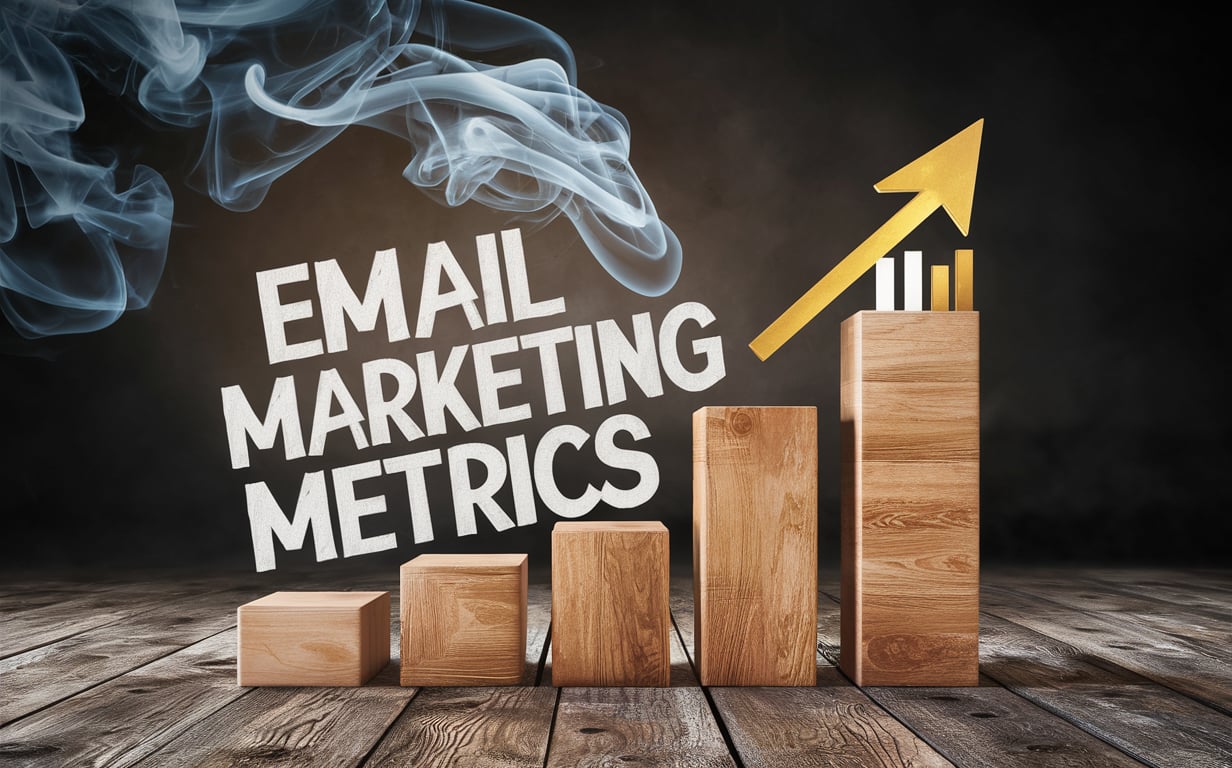
Formulas for Calculating Email Metrics
Now that we’ve defined the main email metrics, let’s look at the formulas for calculating open rate, click-through rate, click-to-open rate, and more. Understanding the math behind these metrics is crucial for tracking campaign performance.
Open Rate Formula
Calculating open rate requires just two numbers:
- Unique opens – The number of unique email addresses that opened your campaign
- Total emails sent – The number of emails successfully delivered to recipients’ inboxes
With those figures, the formula is:
Open Rate = (Unique Opens / Total Emails Sent) x 100
For example, if your campaign was sent to 500 people and 100 unique recipients opened it, the math would be:
Open Rate = (100 / 500) x 100 = 20%
You can retrieve unique opens from email analytics tools like Mailchimp, Constant Contact, HubSpot, and others. Just avoid counting multiple opens from the same address.
Click-Through Rate Formula
Click-through rate is calculated with this formula:
CTR = (Clicks / Impressions) x 100
Where:
- Clicks = Total clicks on all links in the email
- Impressions = Total emails sent or delivered
For instance, if you sent an email to 1000 subscribers and it received 250 clicks, the CTR would be:
CTR = (250 / 1000) x 100 = 25%
CTR is commonly used for social media ad campaigns as well, with impressions being ad views and clicks being…well, clicks.
Click-to-Open Rate Formula
Click-to-open rate controls for differences in open rates. Its formula uses unique opens:
CTOR = (Clicks / Unique Opens) x 100
Using the same example with 250 clicks and 100 opens, the CTOR would be:
CTOR = (250 / 100) x 100 = 250%
This extremely high rate implies nearly all openers clicked on something. In reality, you’ll likely see CTOR between 10-30%.
Hit Rate Formula
Hit rate measures user engagement on a website. Its formula is:
Hit Rate = (Unique Pageviews / Unique Visitors) x 100
For example, if you received 200 visitors last month and they viewed 300 pages, the hit rate is:
Hit Rate = (300 / 200) x 100 = 150%
Higher hit rates indicate visitors are viewing multiple pages. Low hit rates under 100% mean most users leave after one page.
Cost Per Completed View Formula
For video marketing campaigns, cost per completed view (CPV) helps optimize spending. Its formula is:
CPV = (Total Video Ad Spend / Video Completions)
If you spent $1,000 last month and got 1,500 complete video views, the CPV is:
CPV = ($1,000 / 1,500) = $0.67
Lower CPV is better. It means you’re paying less to get full video views.
Now that you know how to calculate essential email and marketing metrics, let’s look at handy calculators to simplify the math.

Email Metric Calculators and Tools
While you can calculate email metrics yourself, online calculators simplify the process and remove the hassle of pulling reports and crunching numbers. Here are some handy tools for measuring open rate, CTR, CTOR, and more.
CTR Calculator
This free click-through rate calculator makes it easy to plug in your total clicks and impressions to output the CTR percentage.
Results also include industry CTR benchmarks for search ads, display ads, email, and social media. Comparing your rate to these averages indicates how your campaigns stack up.
The calculator even lets you toggle between total and unique clicks for more granular insight. Unique CTRs better demonstrate true engagement unaffected by bot traffic.
This tool works for any digital campaign involving clicks and impressions – not just email. Quickly assess the performance of PPC ads, social posts, website content, and more.
Open Rate Calculator
To instantly calculate your email open rate, use a purpose-built open rate calculator.
Just input your total emails sent and number of unique opens. The calculator handles the formula and outputs your open rate as a percentage.
For convenience, it will also compare your rate to the industry average. See if your emails are getting opened more or less than competitor and peer emails.
Most email marketing platforms like MailChimp have open rate calculators built-in too. But for quick one-off assessments, this tool gets the job done fast.
CTOR Calculator
Since click-to-open rate is less common than CTR, finding a dedicated CTOR calculator can be tricky. But this options fits the bill.
Plug in your total clicks and unique opens to get the percentage of openers that clicked through. As discussed earlier, this controls for open rate discrepancies.
The calculator also suggests ways to boost your CTOR based on whether low click or open rates are more responsible.
Other Handy Tools
Beyond those three main calculators, tools for hit rate, CPV, reach, and more exist online as well:
- Email Marketing Metrics Glossary – Reference for metric formulas, definitions, and averages.
- Reach and Frequency Calculator – Calculates reach and frequency for ad campaigns.
- Video Completion Rate Calculator – Converts views and completions into completion rate percentage.
- Email Benchmark Calculator – Compares open and click rates to 12 industries.
With these handy tools, measuring the impact of your email and digital marketing efforts takes just seconds. But calculators only reveal so much. Next we’ll explore average benchmark metrics to gauge your performance.
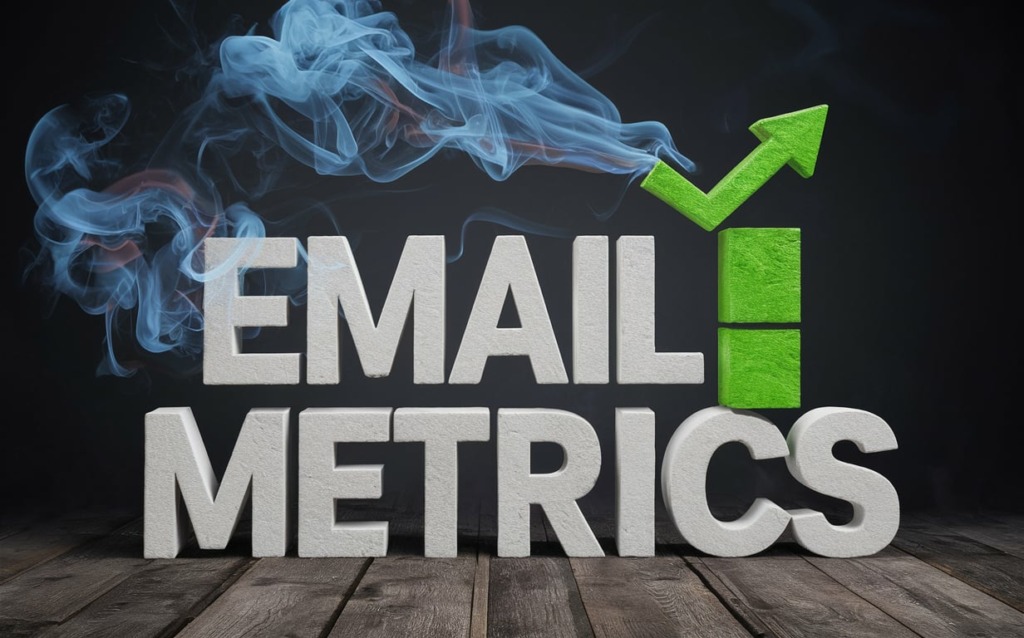
Benchmark Email Marketing Metrics
Understanding average email marketing metrics provides targets to aim for and helps contextualize your own campaign performance. Here we’ll explore typical open rates, click-through rates, unsubscribe rates, and video view rates by industry.
Average Open Rates by Industry
Email open rates vary significantly across different sectors. According to Mailchimp data, average open rates by industry are:
- Fashion and Apparel – 28.3%
- Real Estate – 26.5%
- Education and Training – 23.6%
- Non-profits – 22.8%
- Business Services – 21.7%
- Computer Software – 21.0%
- Media and Publishing – 20.4%
- Retail – 19.6%
- Health and Fitness – 18.6%
- Financial Services – 18.0%
Other benchmarks to note:
- Emails with 251-500 recipients see a 23.5% open rate on average. More recipients means lower open rates.
- Plain text emails get 15% higher open rates than HTML emails on average.
- Emails sent on Saturday and Sunday have open rates around 25%, higher than weekdays.
Segmenting your list and assessing open rates by day and size can reveal areas for optimization. Tailor content based on subscriber attributes and behaviors.
Good Click-Through Rates
What constitutes a “good” click-through rate depends on your industry and campaign objectives.
For reference, here are typical CTRs by sector according to Mailchimp:
- Fashion and apparel – 8.8%
- Travel and hospitality – 5.9%
- Health and fitness – 5.0%
- Non-profit – 4.5%
- Education and training – 4.0%
- B2B technology – 3.1%
- Media and publishing – 2.9%
- Business services – 2.7%
- Computer software – 2.3%
- Financial services – 1.6%
Other CTR benchmarks:
- Emails to under 100 subscribers have a 4.7% CTR on average. More recipients means lower CTR.
- Saturday emails get the highest CTR around 4.8%. Sunday is lowest at 2.6%.
- Plain text email CTR is 2.2X higher than HTML (5.8% vs 2.6%).
CTR above 5% is considered excellent for most industries. Anything under 2% may need improvement.
Average Unsubscribe Rates
According to Mailchimp, the average unsubscribe rate across all industries is 1.1%. Here’s how sectors compare:
- Fashion and apparel – 0.92%
- Non-profit – 0.98%
- Computer software – 1.07%
- Media and publishing – 1.10%
- Education and training – 1.13%
- Retail – 1.13%
- Real estate – 1.15%
- Business services – 1.18%
- Financial services – 1.24%
- Health and fitness – 1.29%
Higher volume email lists see lower unsubscribe rates on average:
- <100 subscribers – 1.68%
- 500-999 subscribers – 1.18%
- 5,000-9,999 subscribers – 1.04%
- 100,000+ subscribers – 0.77%
An unsubscribe rate around 1-3% is considered acceptable. Over 5% may indicate less relevant content, overly frequent emails, or poor deliverability.
Typical Video View Rates
For video marketing campaigns, benchmark metrics help gauge successful view rates. Here are some averages to aim for:
- Click-to-play rate – Percentage of impressions a viewer clicks to start watching. Average is 1.84%.
- View rate – Percentage of video ad impressions that result in a view. Average is 78.28%.
- Completion rate – Percentage of started video views that are completed. Average is 54%.
Higher education sees the best click-to-play rate at 2.5%. Travel has the lowest at 1.26%.
Entertainment and media enjoy a 90% video view rate while B2B is only 60%.
View and completion rates are widely varied based on video length, platform, style, and more. Shorter videos perform better on clicks and completions.
Evaluating your email and marketing metrics relative to your industry’s averages pinpoints opportunities for refinement. But remember that benchmarks serve as guidelines rather than definitive goals.
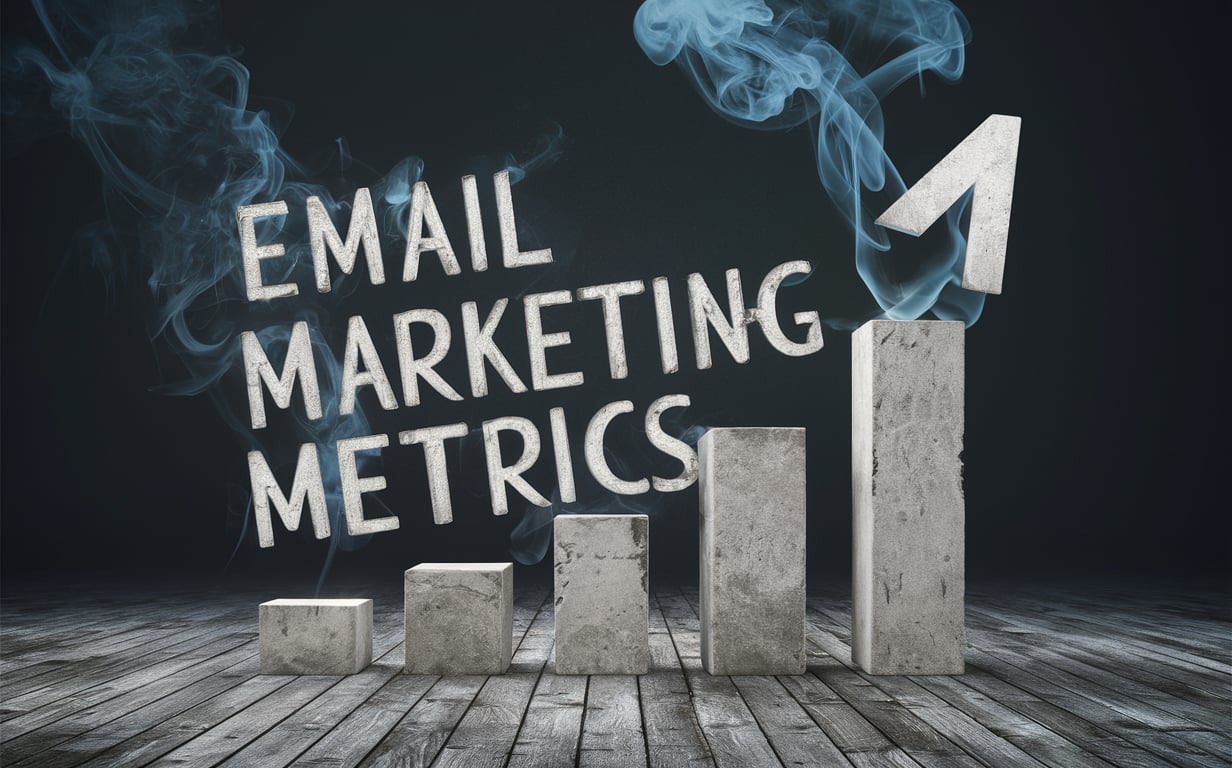
Tips for Improving Key Email Metrics
Benchmark metrics provide goals to aim for. But how do you actually achieve higher open rates, click-through rates, and lower unsubscribe rates? Here are proven tips for optimizing each key email metric.
Subject Line Optimization
Since the subject line drives opens, perfecting it improves overall performance. Some best practices include:
- Use subscribers’ first names – Personalization boosts open rates up to 26%. But avoid full names which look spammy.
- Keep it short and scannable – Lengths under 50 characters work best so recipients can fully see subjects on mobile.
- Try curiosity-sparking questions – Asking questions and using “you” draws readers in. E.g. “Are these emails going in your spam folder?”
- Test emotional wording – Emotional words can increase CTR. Test words like “love”, “laugh”, “save”, “free”, “new”, “introducing”.
- Experiment with brackets and emojis – Brackets around your topic and emojis at the end grab attention. But use sparingly.
- Avoid overused phrases – Don’t use generic phrases like “Act now” or “Limited time only”. Come up with something unique.
- Send preview text – Preview text gets displayed under the subject in inboxes, giving you more real estate.
- A/B test different options – Use a subject line testing tool to identify winners based on open rates. Refine and repeat testing.
With endless permutations of words, emojis, formatting, etc., the possibilities are endless for crafting compelling subjects. Test broadly at first, then narrow down what resonates most with your audience.
Email List Segmentation
Segmenting your email list allows sending targeted messages tailored to subscribers’ interests and attributes. Major benefits include:
- Higher open rates – Segmented emails see open rates up to 15% higher on average.
- Better CTR – CTR for segmented campaigns is typically 6% higher than generalized emails.
- Lower unsubscribe rates – Irrelevant, overly promotional emails often cause unsubscribes. Segmenting avoids this.
- More conversions – Focused, relevant messaging drives more conversions over generic blasts.
Best practices for email list segmentation include:
- By demographics – Segment by role, seniority, location, age group, gender, etc. Message accordingly.
- By interests – Group by interests like topics, products, and types of content they engage with.
- By past purchases/activity – Customers who bought certain products appreciate follow-up promotions.
- By engagement – Segment engaged readers into one list, inactive ones in another for re-targeting.
- By lead score – Separate new leads from close-to-converting for tailored nurturing.
- Automate with tags/rules – Tag subscribers when they perform certain actions to segment automatically.
Take time to intentionally divide your list rather than just sending the same thing to all users. The effort drives major lifts across all email metrics.
Personalization
Along with using first names in subject lines, personalization throughout the body boosts engagement. Tactics include:
- Show suitable products/content – Display products or content specific to the recipient’s interests.
- Add their name throughout – Sprinkle their first name in body content to speak directly to them.
- Use dynamic fields – Insert merge fields to display custom data like first name, company, etc.
- Mention past interactions – “Nice to see you back, Amanda. Your last login was 5/14/2022.”
- Segment and personalize – Send different versions of a campaign to segments with targeted content.
- Recommend based on past purchases – If someone bought Product X, recommend accessories for Product X.
- Tailor by location – Include locations, events, or deals near the subscriber if possible.
- Trigger by behaviors – When they perform an action like downloading content, follow up personally.
Even subtle personalization makes subscribers feel valued. But avoid being creepy by overusing their name. Find the right balance and test different approaches.
Mobile Optimization
Since over half of emails get opened on mobile, optimizing for mobile is a must. Tips include:
- Use responsive templates – Templates should resize automatically using flexible containers and text sizing.
- Stick to a single column – Avoid multiple columns which force awkward horizontal scrolling on phones.
- Include large, tappable buttons – Make all CTA buttons very easy to tap on with just a thumb.
- Keep font sizes above 14px – Smaller fonts get illegible. But don’t make body copy too large either.
- Simplify menus and navigation – Stack navigation items and collapse menus to minimize taps.
- Don’t hide important content – Avoid “hamburger menus” hiding critical info that may get missed.
- Preview on phones – Thoroughly test previews on iOS and Android phones before sending.
Focusing on mobile optimization pays dividends as more email gets consumed on smartphones. Measure results by platform and refine accordingly.
Call-to-Action Button Testing
The most important element of any email is the call to action (CTA). To maximize CTR and conversions, test these variations:
- Button color – Contrasting, vibrant colors often perform better than muted ones.
- Button size – Larger buttons improved CTR in one study. Try increasing button size.
- Button copy – Test different phrasings like “Shop now” vs “Start shopping”.
- Button style – Try different shapes and effects like rounded edges or shadows.
- Add social proof – Listing subscribers or displaying reviews increased CTR by over 5% for one brand.
- Use urgency cues – Test urgency language like “24 hours left!” or “Only 5 spots remain!”.
- Limit to one CTA – Don’t confuse readers with too many CTAs. Focus on one strong call to action.
Treat your CTA button like the key to email success and refine it based on open and click metrics. Changing just the button can dramatically lift results.
Email Frequency Optimization
Striking the right email frequency improves engagement and limits subscriber fatigue or annoyance. Consider these tips:
- Map subscriber lifecycle – Send progressively more emails at key stages from prospect to repeat buyer.
- Make frequency clear – Tell subscribers upfront what to expect when signing up. Adhere to your promise.
- Limit promos/newsletters – Stick to monthly for promotional content to avoid overwhelming subscribers.
- Ask for preferences – Survey users on their desired email frequency and segmentation.
- Send when most engaged – Review stats to detect when subscribers are most active and tailor cadence.
- Practice value-focused pacing – Gradually step down email frequency after purchases to avoid coming off as “needy”.
- Watch unsubscribe spikes – If unsubscribes spike after a recurring email, switch up your cadence.
Email marketing success requires constant list monitoring, segmenting, testing, and optimizing. Use the tips in this guide to lift email metrics and fuel growth.
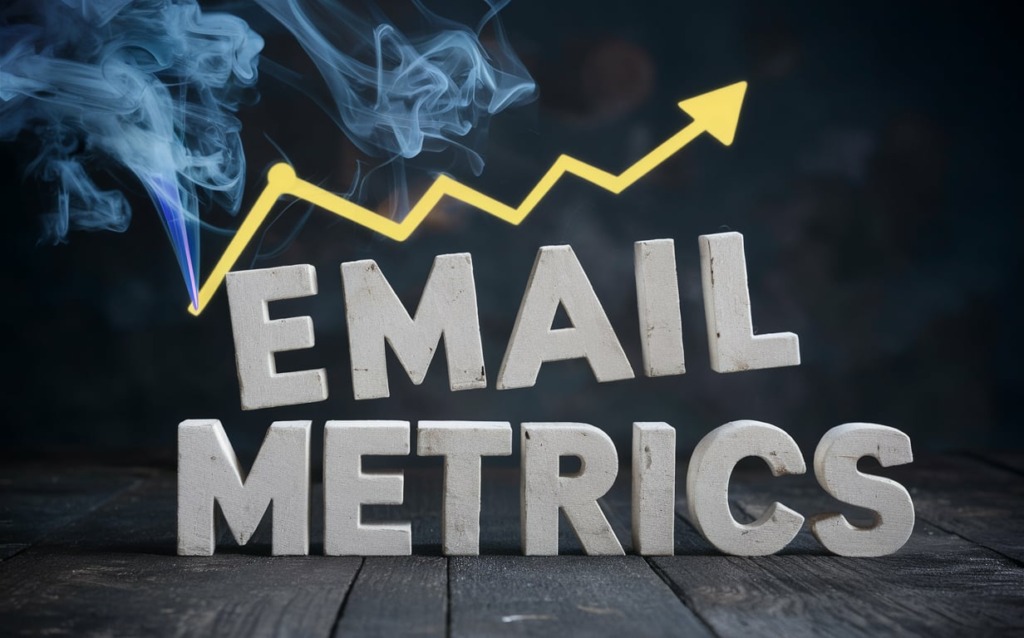
Email Analytics and Tracking
Understanding how to dig into email analytics provides greater insight into list engagement and campaign performance. Let’s explore tracking open rates, CTRs, and other metrics using platforms like Mailchimp.
Mailchimp Opens vs. Total Opens
Mailchimp’s email reports highlight the difference between total opens and unique opens.
Total opens count every open, including multiple opens by the same person. If one subscriber opened your email five times, that’s five towards total opens.
Unique opens only count an open from each individual recipient once, no matter how many times they view the email.
Comparing total vs. unique opens reveals re-engagement. Higher total opens indicate recipients opening multiple times – a sign of strong interest and quality content.
If total and unique opens are close, it means most people only looked once. Lower quality content, technical issues, or subject lines unrelated to content could be the cause.
Tracking Open Rates
Mailchimp and other email services track open rate automatically. But you can also add custom code to gauge opens.
Some methods for tracking open rate include:
- Tracking pixels – Place an invisible 1×1 pixel image linking to your server. When emails are opened, the pixel gets requested and logged.
- Open tracking APIs – Platforms like Mailchimp allow using their tracking API to detect opens by calling it each time an email loads.
- Web beacons – Also called tracking beacons, these embed a small object to connect when emails open.
- Click tracking – Measuring and recording clicks in your links technically confirms an open.
Auto open tracking provides the big picture on every campaign. For a deeper dive, build custom tracking to segment and analyze performance across specific tests, messages, and segments.
Tracking Click-Through Rates
Many email services again offer turnkey CTR tracking. But you can also implement custom solutions.
To track CTR yourself:
- Append tracking parameters – Add unique UTM codes to links so clicks pass through your analytics.
- Shorten links – Use a URL shortener like Bitly to create tagged links and track clicks.
- Track on page load – When links are clicked, use JavaScript on your pages to call analytics and log.
- Track redirects – Use a middle redirect page to count clicks before taking users to the final URL.
Think beyond basic open and click rates. Build custom tracking for scroll depth, engagement time, repeat opens, bounces, etc.
Advanced behavioral segmentation and lifecycle analysis takes your email program from simple blasting to strategic nurturing. Email’s flexibility allows limitless customization if you’re willing to code it.

Key Takeaways
Optimizing your email marketing performance requires mastering essential metrics like open rate, click-through rate, and unsubscribe rate. Here are some key lessons:
- Know the formulas for calculating open rate, CTR, CTOR, and other metrics. Understanding the math makes tracking easy.
- Use free calculators and tools to crunch the numbers and evaluate against averages.
- Analyze metrics not just for campaigns overall, but segmented by subgroups, days, ad versions, and other factors.
- Perfect your subject lines through A/B testing different options and personalization. Compelling subjects drive opens.
- Segment your list based on user attributes and behaviors to send targeted, relevant content.
- Make your emails mobile-friendly, with easy navigation, large buttons, and succinct content.
- Test different call-to-action button styles, colors, and text to maximize clicks.
- Find your audience’s ideal email cadence through surveys and monitoring engagement over time.
- Dig deeper into campaign performance with custom tracking using pixels, links, and behavioral data.
Email marketing takes continual refinement and optimization. But the payoff in engagement, conversions, and revenue makes mastering metrics a crucial investment.
Frequently Asked Questions
What is a good open rate?
Open rates vary widely by industry, from 18-28% on average. Anything over 25% is excellent for most businesses. Under 15% may need improvement.
What is a good click-through rate?
Average CTR across industries is around 2-3%. 5% or higher is considered very strong. Under 1% indicates issues. Evaluate CTR by industry and campaign objective.
How often should I send emails?
Ideal frequency depends on your audience and objectives. For promotional content, monthly is common. Use surveys and data to determine optimal frequency based on engagement.
Should I track total or unique opens/clicks?
Unique opens and clicks better indicate true engagement from each recipient. But higher total opens can signify strong interest if people are re-opening your emails. Evaluate both.
How do I calculate click-through rate?
CTR equals total clicks divided by total deliveries or impressions. Most email services track CTR for you automatically.
What’s the difference between CTR and CTOR?
Click-through rate uses total impressions/deliveries in the denominator. Click-to-open rate only counts unique opens, controlling for open rate differences.
How do I increase low open rates?
Try better subject lines, personalized previews, sending on better days/times, and optimizing from mobile. Check spam filters and sender reputation as well.
How do I increase low click-through rates?
Improve content quality, email layout, call-to-action buttons, and messaging relevance. Ensure your email list is properly segmented.
Why are my metrics lower than industry benchmarks?
Benchmark averages are influenced by big brands. Focus on optimizing your own metrics over time vs chasing industry figures.
How do I track email metrics deeper than opens and clicks?
Use custom tracking pixels, web beacons, redirects, and link tagging to collect advanced behavioral data and segment users.

